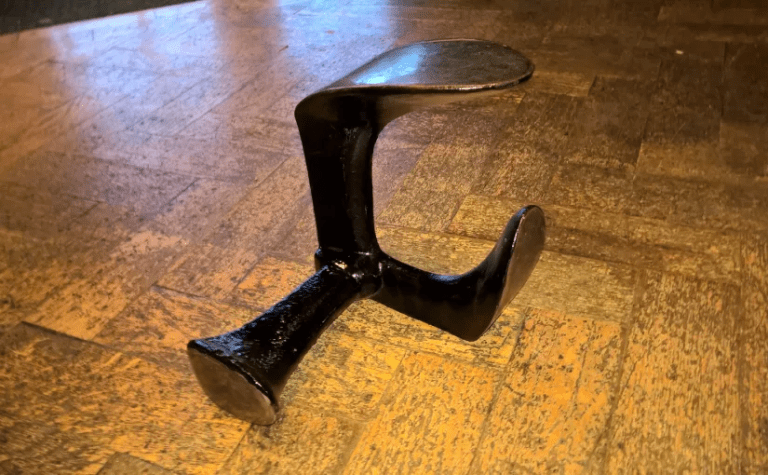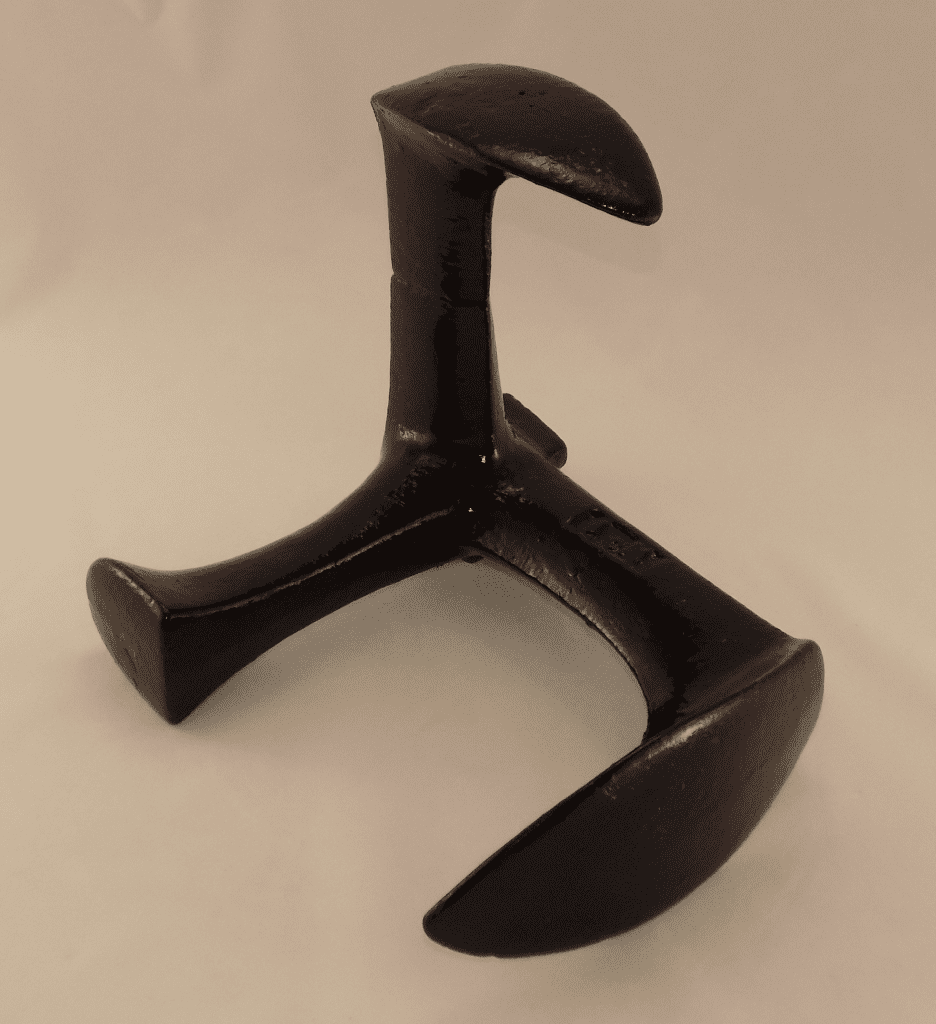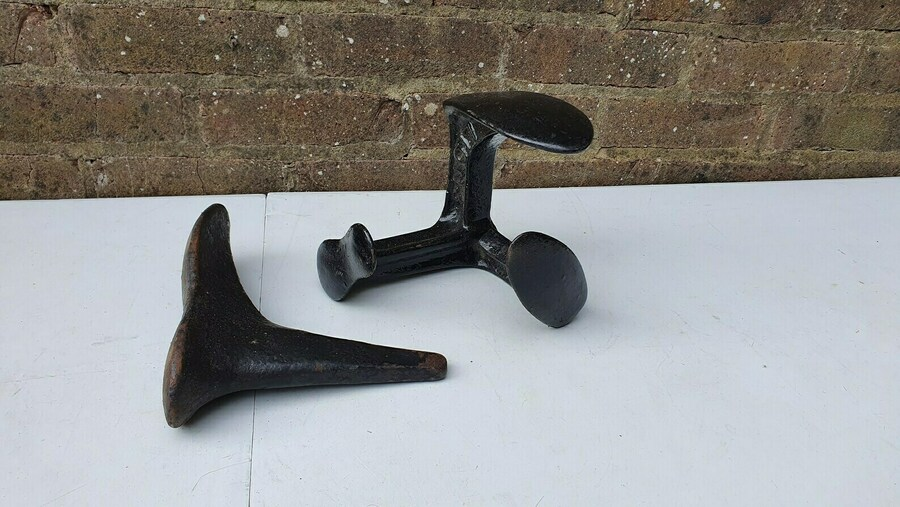Shoe repair is an age-old craft that has stood the test of time. While shoe trends have come and gone, one thing remains constant: the need to keep our favorite footwear in working order. For centuries, cobblers have relied on a few key tools to work their magic, with the cobbler’s last standing out as the cornerstone of the craft.
What is a Cobbler’s Last?

A cobbler’s last is a foot-shaped form, usually made from metal, wood, or plastic, upon which shoes are shaped, repaired, and even created. The tool’s unique design mimics the contours of the human foot, allowing cobblers to work on shoes with precision and care. Without this essential tool, the art of shoe repair as we know it wouldn’t exist.
In the image provided, you can see a classic example of a cobbler’s last—its sturdy, foot-like structure is instantly recognizable to anyone familiar with shoe repair.
The Origins of the Cobbler’s Last: A Tool with Deep Roots
The history of the cobbler’s last goes hand-in-hand with the evolution of footwear itself. As far back as ancient Egypt, rudimentary versions of the last were used to shape sandals and shoes. These early lasts were often handcrafted and made from basic materials like wood or bone. As shoe designs became more sophisticated, so too did the last.
By the Middle Ages, cobblers across Europe had refined the tool to better match the complex designs of medieval footwear. The last became a vital instrument in producing shoes that not only fit well but also aligned with the fashion of the time. Cobblers used the last to stretch, shape, and reinforce shoes, ensuring longevity for footwear that was often a significant financial investment.
The Role of the Cobbler’s Last in Shoe Repair
Fast forward to today, and the cobbler’s last still plays a central role in shoe repair. Whether fixing a heel, reattaching a sole, or stretching leather to make a pair of shoes more comfortable, cobblers rely on the last to help bring the shoe back to its ideal form.
Imagine this: your favorite pair of leather boots have worn out from years of use. The soles are beginning to detach, and the leather is cracked from exposure to the elements. Rather than tossing them in the trash, a skilled cobbler will place your boots onto a last. From here, they’ll be able to restore the shoes, making repairs that are tailored perfectly to the shape and structure of the footwear. The result? A pair of shoes that not only look as good as new but are also restored to their original fit.
How the Industrial Revolution Changed the Game for Cobblers
The Industrial Revolution brought major changes to the shoe industry. Mass production took over, leading to the creation of standardized lasts that allowed factories to churn out shoes at an unprecedented rate. While this shift made footwear more affordable and accessible, it also diminished the role of traditional cobblers, who were once responsible for both crafting and repairing bespoke shoes.
However, despite this upheaval, cobblers remained indispensable when it came to repair work. Shoes, like all products, wear out with time, and the cobbler’s last continued to play a vital role in extending the lifespan of footwear. Even today, amidst a world of fast fashion and disposable goods, cobblers and their trusty lasts remind us of the value of repairing rather than replacing.
Modern Shoe Repair: Tradition Meets Innovation

While the cobbler’s last remains an essential tool, modern cobblers have more advanced materials and techniques at their disposal. One of the most important developments in recent decades has been the introduction of high-performance adhesives, like NJOY’s Shoe-Fix and Boot-Fix glues. These modern adhesives offer unparalleled strength, flexibility, and ease of use, making it easier than ever for cobblers and DIY enthusiasts alike to restore worn-out shoes.
Take a pair of sneakers that have split at the sole, for example. A cobbler will use the last to hold the shoe in its natural shape while applying an adhesive like Shoe-Fix Glue, which bonds quickly and securely to materials like rubber and fabric. The last ensures that the shoe maintains its form during the repair process, resulting in a seamless fix that keeps the shoe functional and wearable.
The Cobbler’s Last: A Symbol of Sustainability
In today’s era of fast fashion, the cobbler’s last represents more than just a practical tool—it symbolizes sustainability. With growing awareness of the environmental impact of mass production, more people are turning to repair rather than replacement. This shift is crucial when you consider the millions of shoes that end up in landfills each year.

By repairing shoes using a cobbler’s last, we can extend the life of our footwear, reduce waste, and contribute to a more sustainable future. Every pair of shoes that’s restored rather than discarded is one less item contributing to environmental degradation.
Conclusion: The Timeless Importance of the Cobbler’s Last
The cobbler’s last is much more than a tool—it’s a lifeline for your favorite shoes. It has been used by skilled artisans for centuries to keep footwear in perfect shape, evolving alongside the craft of shoe repair itself. While the materials and methods have advanced, the fundamental role of the last remains unchanged: it’s the unsung hero that keeps our shoes alive.
As we continue to prioritize sustainability and resourcefulness, the cobbler’s last will remain a vital tool for years to come. Whether you’re relying on a professional cobbler or doing your own repairs at home with products like NJOY’s Shoe-Fix and Boot-Fix, the last stands as a testament to the enduring art of shoe repair.
In a world that often values the new over the old, it’s worth remembering that some things, like a well-repaired shoe, only get better with time.